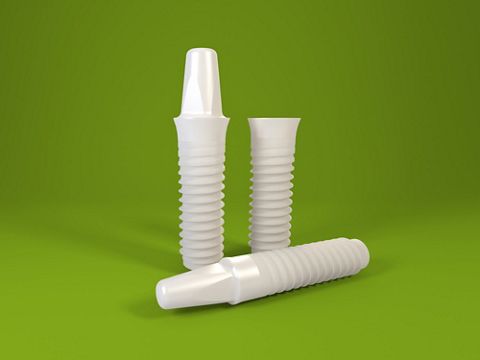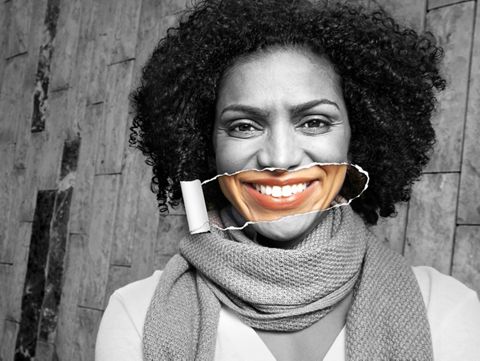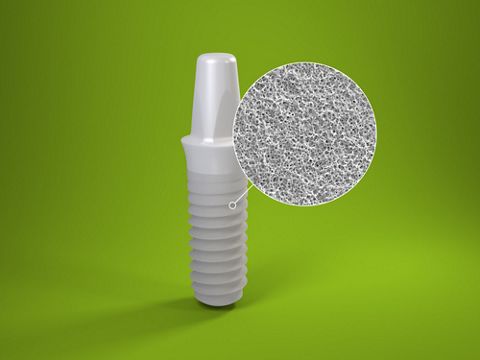PURE Ceramic Implant Monotype (type 4C) in upper premolar
A clinical case report by Alejandro Treviño Santos, Alejandro Signorio Duque
Zirconium oxide (ZrO2) implants have recently been introduced in dental implantology as an alternative to the well-established titanium implants to ensure good esthetic results, especially in cases with thin mucosal biotypes. The Straumann® PURE Ceramic Implant Monotype consists of an implant and abutment made of ZrO2 ceramic. Here we report on the new classification of implant placement and loading protocols as proposed in the 2018 International Team for Implantology (ITI) Consensus Conference, which defines type 4C as late placement + conventional loading.
Initial situation
A healthy 35-year-old female had been missing an upper right first premolar for three years. Her chief complaint pertained to the esthetic impact of this issue. (Figs. 1-2)
Procedure
Treatment planning
Cone beam computed tomography showed excellent bone in the mesio-distal, oro-facial and corono-apical aspects of tooth 14. Here it was vital to ensure rigorous, detailed implant placement through prosthetic-driven planning and to establish the ideal insertion axis for the implant during implant bed preparation. (Figs. 3-5)
Surgical procedure
A marginal incision was made to reflect a mucoperiosteal flap. (Fig. 6) The implant bed was prepared according to the Straumann® PURE monotype workflow. This included the use of a new instrument, the position indicator, which is used to ensure correct implant positioning, angulation, and restorability and indicate the future location of the implant shoulder and abutment. (Figs. 7-8) To ensure that no excessive force was applied to the implant during insertion, fine implant bed preparation was conducted with a profile drill and subsequent tapping. To insert the implant, first attach the transfer piece to the implant (Fig. 9) and then insert the implant to the correct depth. (Figs. 10-11) The implant is designed to have its shoulder sitting 1.8 mm above the crestal bone. (Fig. 12)
Prosthetic procedure
Due to the design of the one-piece implant, the workflow for the prosthetic procedure includes protecting the abutment during the healing phase. The implant abutment needs to be protected against chewing or cheek and tongue pressure with a protective cap (Figs. 13-14) or a temporary coping which is then used to fabricate an interim prosthesis to ensure soft tissue management. (Figs. 15-16) The impression must be taken using a closed-tray technique. The analog is then placed on the tray and the master cast fabricated. (Figs. 17-19) The Straumann® PURE Ceramic Implant Monotype should be restored with all-ceramic restorations, so we decided to make two different final prostheses, one made of ZrO2 (Fig. 20) and the other of lithium disilicate (LS2). (Fig. 21) This was done to assess translucency, esthetics and occlusion. (Fig. 22) In the end we chose the ZrO2 prosthesis, because we were restoring a posterior tooth and in most cases we prefer a crown that is hard and resistant rather than translucent. (Fig. 23)
Treatment outcome
The patient’s chief complaint was addressed. Ceramic implants produce better esthetic results in cases with thin mucosal biotypes as well as ensuring natural soft tissue shaping and maintenance, which also contribute to better esthetics. The implant placement and restoration loading protocol should be selected so as to achieve predictable outcomes in terms of long-term hard and soft tissue stability, optimal esthetics, and a reduced risk for complications.
Findings
The Straumann® PURE Ceramic Implant Monotype attains a new level of quality that ensures reliable implant strength, reduced sulcus depth (pocket depth) and better biological width (attached gingiva) compared to titanium implants, thereby helping clinicians to maintain long-term esthetic results.




